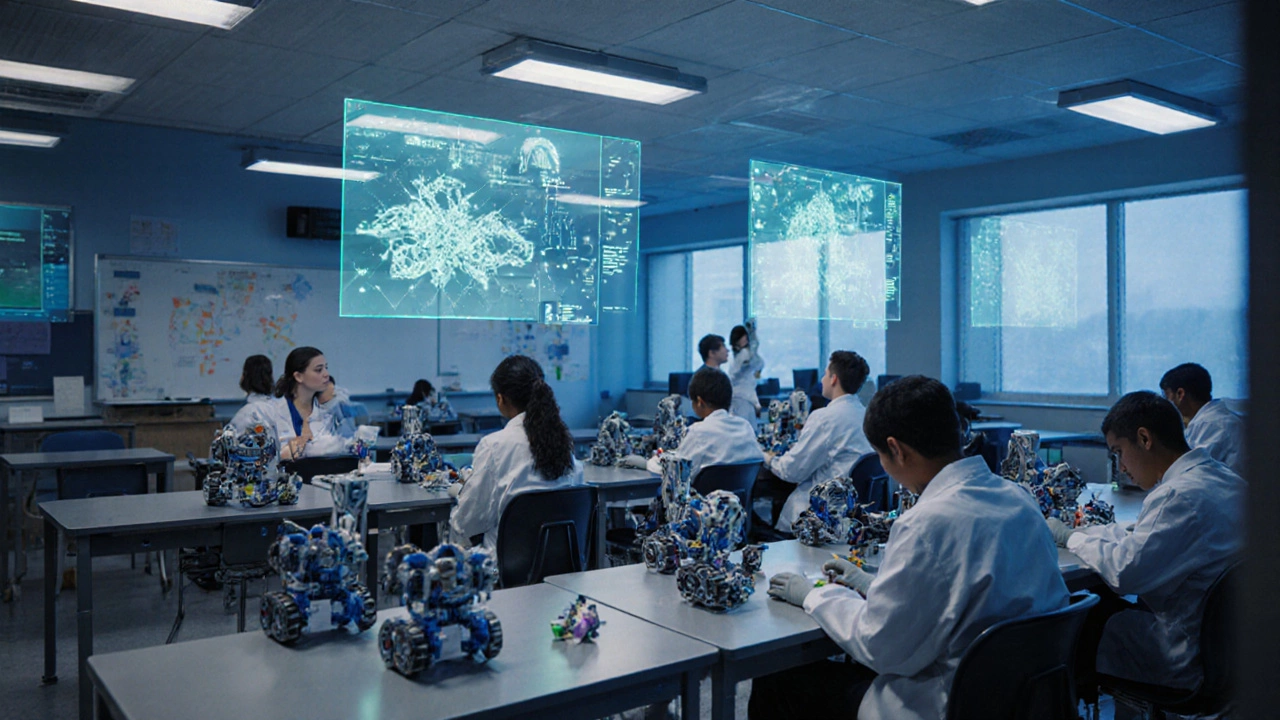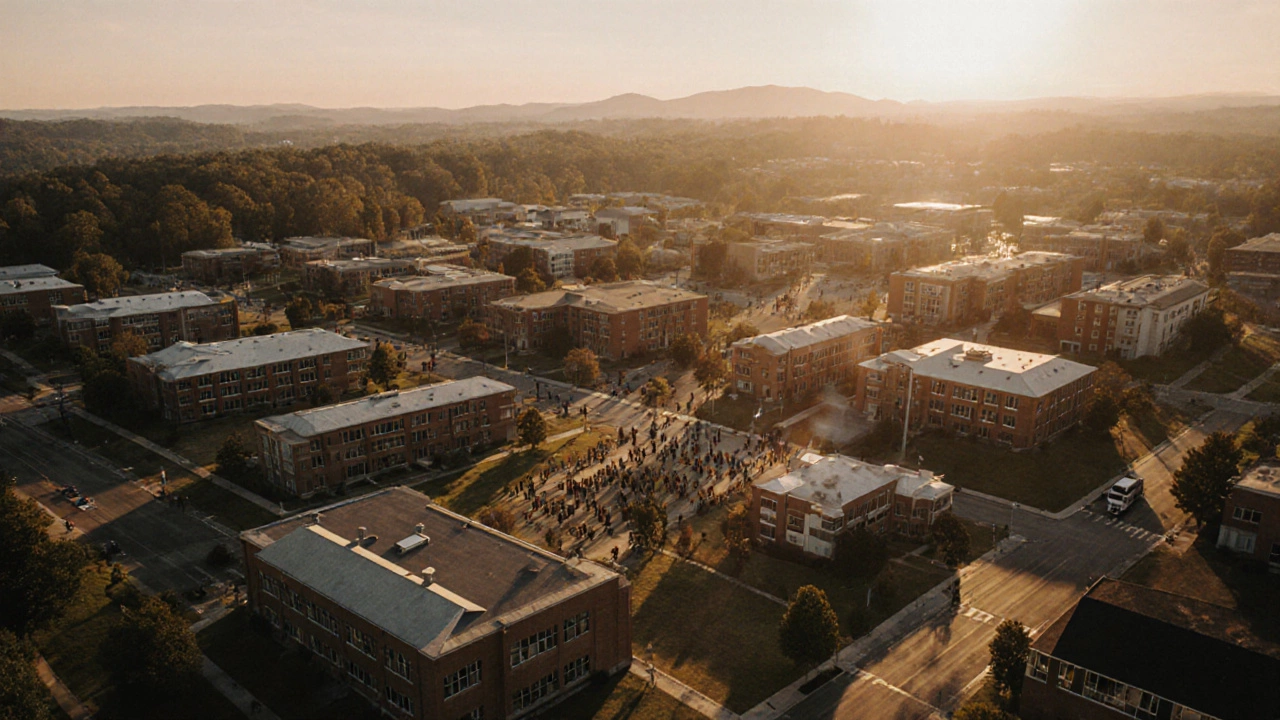Virginia School District Comparison Tool
Compare Virginia School Districts
Select a district to see how it compares to Fairfax County Public Schools, the largest school system in Virginia.
Select a district to see comparison data.
When people ask about the largest school system in Virginia, they’re usually trying to understand where the most students are enrolled, which schools have the most resources, or maybe even where to move if they want access to a big, well-funded public education network. The answer isn’t a mystery-it’s straightforward, well-documented, and has been true for decades.
Fairfax County Public Schools is the largest school system in Virginia
Fairfax County Public Schools (FCPS) serves more than 188,000 students across 230 schools. That’s not just the biggest in Virginia-it’s one of the largest school districts in the entire United States. To put that in perspective, FCPS has more students than the entire populations of many U.S. cities, including Richmond, Norfolk, and Arlington combined.
The district covers nearly 400 square miles, stretching from the edges of Washington, D.C., all the way to the western suburbs near the Blue Ridge Mountains. It includes towns like Falls Church, Alexandria (partially), Reston, Herndon, Vienna, and Annandale. If you live in Fairfax County, chances are your kids go to FCPS.
What makes FCPS stand out isn’t just size. It’s diversity. Over 180 languages are spoken in homes across the district. More than half of the students identify as non-white. Nearly 20% qualify for free or reduced-price meals. And despite those challenges, FCPS consistently ranks among the top-performing districts in the country on standardized tests like the SAT and NAEP.
Why size matters in a school system
Larger school districts don’t just have more students-they have more options. FCPS offers 35 world language programs, 27 Advanced Placement (AP) capstone programs, and 14 career and technical education pathways. There are 19 specialized high schools, including Thomas Jefferson High School for Science and Technology, which is ranked among the top public high schools in the nation.
Bigger budgets mean more support staff. FCPS employs over 27,000 people, including 13,000 teachers, 2,000 counselors, and hundreds of special education aides, nurses, and psychologists. The district spends roughly $18,000 per student annually-well above the Virginia state average of $13,500.
That funding translates into real differences: smaller class sizes in elementary grades, robotics labs in every middle school, and college counseling offices that help students apply to Ivy League schools and community colleges alike.

How FCPS compares to other big districts in Virginia
While FCPS is the clear leader, Virginia has other sizable districts. Here’s how they stack up:
| School District | Students Enrolled | Schools | Key Features |
|---|---|---|---|
| Fairfax County Public Schools | 188,000+ | 230 | Top-ranked AP programs, 180+ languages, 19 specialized high schools |
| Prince William County Schools | 175,000+ | 150 | Fastest-growing district, strong STEM focus, 3 career academies |
| Virginia Beach City Public Schools | 155,000+ | 140 | Coastal region, large arts and music programs, 10 career and technical centers |
| Chesapeake Public Schools | 78,000 | 65 | Mid-sized, strong vocational training, growing magnet programs |
| Arlington Public Schools | 56,000 | 45 | High-performing, small class sizes, 100% college acceptance rate |
Prince William County Schools is the only other district in Virginia that comes close to FCPS in size-and even then, it’s still about 13,000 students behind. Virginia Beach is third, but it’s nearly 30,000 students smaller than Fairfax. The gap doesn’t close easily. FCPS adds roughly 2,000 new students every year, mostly due to population growth from federal workers, military families, and international immigrants.
What being the largest means for families
If you’re considering moving to Virginia for the schools, FCPS offers more than just numbers. It has one of the most comprehensive special education programs in the state, serving over 25,000 students with disabilities. There are dual-language immersion programs in Spanish, Mandarin, French, and Arabic. Gifted and talented students can enroll in advanced academies starting in third grade.
But size also brings complexity. Waitlists for popular magnet schools can be long. Transportation delays happen during snowstorms because buses cover such a wide area. And with so many families, parent involvement can feel overwhelming-there are over 1,000 active PTA chapters.
Still, the trade-offs are worth it for many. FCPS graduates have a 96% high school graduation rate. Over 75% go on to college. And the district’s alumni network includes CEOs, engineers, scientists, and elected officials across the country.

Is FCPS right for your family?
Not every family needs a district this big. If you live in a rural area like Southwest Virginia or the Eastern Shore, smaller districts may offer more personalized attention. But if you want access to advanced courses, diverse peer groups, and a wide range of extracurriculars-from robotics clubs to theater troupes-FCPS delivers.
Here’s what to consider:
- Location matters. FCPS boundaries don’t match county lines exactly. Use the official School Locator Tool on their website to confirm which school your address is zoned for.
- Transportation. Buses run early and late. If you live near a major highway, your child might spend 45 minutes or more commuting each way.
- Special programs. If your child is gifted, has a learning difference, or wants to study a specific language, FCPS has options-but you need to apply early. Deadlines for magnet programs are in January.
- Community. FCPS schools are often the center of neighborhood life. Attendance at school board meetings can be intense. But if you want to get involved, there’s no shortage of ways to do it.
What’s next for Virginia’s largest school system?
FCPS is planning for the future. A new $1.2 billion bond program approved in 2024 will build 12 new schools and modernize 40 others over the next five years. They’re also rolling out AI-powered tutoring tools in middle schools and expanding mental health services to every campus.
With Virginia’s population expected to grow by another 8% by 2030, FCPS will likely keep expanding. That means more students, more pressure on resources, and more opportunities too.
For families, the takeaway is simple: if you want the largest, most diverse, and most resource-rich public school system in Virginia, Fairfax County is the place. But size isn’t everything-you still need to find the right school, the right program, and the right fit for your child.
Is Fairfax County Public Schools the largest school district in the U.S.?
No, FCPS is the largest in Virginia and one of the top 10 in the U.S., but it’s not #1. The New York City Public Schools district serves over 900,000 students, and Los Angeles Unified is close behind with about 600,000. FCPS ranks around #8 nationally by enrollment.
Do I have to live in Fairfax County to attend FCPS schools?
Yes, for traditional zoned schools, you must live within Fairfax County boundaries. However, some magnet and specialty programs (like Thomas Jefferson High School) accept students from outside the county through competitive applications. You still need to meet residency requirements for most programs.
How do I find out which school my child is zoned for in FCPS?
Use the official FCPS School Locator tool on their website. Just enter your home address, and it will show your assigned elementary, middle, and high school. You can also call their enrollment office at (703) 228-6000 for help.
Are FCPS schools better than private schools in Virginia?
It depends on what you’re looking for. FCPS offers more variety, lower cost, and broader access to advanced programs. Private schools may offer smaller classes and religious curricula, but they don’t have the same range of special education services, ESL support, or extracurricular options. Many families choose FCPS because it provides a high-quality education without tuition.
What’s the best way to get involved in FCPS?
Join your child’s PTA, attend school board meetings, or volunteer through the district’s Family Engagement Center. FCPS encourages parent participation and offers training for those who want to serve on advisory committees or help with language interpretation services.

